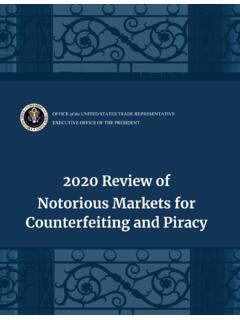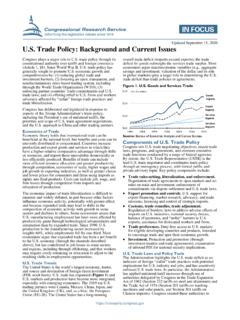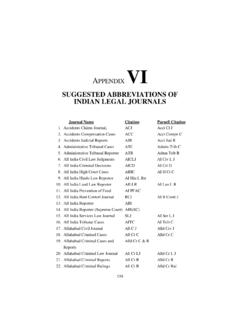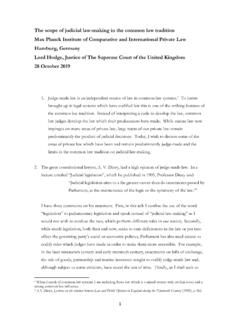Transcription of SMALL AND MEDIUM-SIZED ENTERPRISES IN ASIA AND …
1 Support for SMALL and MEDIUM-SIZED ENTERPRISES , 2005 2017: Business Environment, Access to Finance, Value Chains, and Women in Business, Linked Document A SMALL and MEDIUM-SIZED ENTERPRISES in asia and the Pacific: Context and Issues 1 SMALL AND MEDIUM-SIZED ENTERPRISES IN asia AND THE PACIFIC: CONTEXT AND ISSUES A. Context 1. SMALL and MEDIUM-SIZED ENTERPRISES (SMEs) represent a significant proportion of ENTERPRISES , especially in developing countries. A study by the International Finance Corporation (IFC) in 2010 showed that, in an emerging economy, the majority of firms are microenterprises (65% 75% of total ENTERPRISES ), followed by SMALL ENTERPRISES (20%) and MEDIUM-SIZED ENTERPRISES (5% 10%), while large ENTERPRISES , corporates, and multinationals together comprise a minor 1% (Figure 1).1 2. IFC estimated that there are some 25 million 30 million formal SMEs (those with 5 250 employees) in developing countries, including million million in Central asia and Eastern Europe, million million in East asia , and million millio n in South A 2014 publication by Asian Development Bank (ADB) showed that, for the 20 countries in asia and the Pacific with available data during 2011 2014, on average, SMEs represented 62% of national employment, ranging from 4% to 97%, and accounted for 42% of gross domestic product (GDP), ranging from 12% to 60% (Figure 2).
2 3 3. SMEs are usually defined by the number of their employees, the value of their assets, and/or the value of their sales. However, specific cutoffs vary from country to country. There are also different criteria and different cutoffs for different sectors. For example, SMEs are defined as having up to 1,000 workers in some sectors in the People s Republic of China (PRC), but the cutoff is up to 200 workers for some sectors in Thailand. Furthermore, government agencies within the same country may use different definitions. For example, a ministry may use one definition while the national statistics office uses another, and a lending policy may adopt yet another 4. Analysts have called for a standard definition across countries to make comparative analysis easier, but governments generally see no need to go beyond their own As a result, there is no universal agreement on what qualifies as an SME and definitions vary widely across countries.
3 5. Many factors, barriers and constraints influence the performance of SMEs and the development of a country s SME sector. To identify major constraints facing SMEs in 25 countries supported by ADB during 2005 2017, the evaluation team reviewed project documents of all the operations under 1 IFC. 2010. The SME Banking Knowledge Guide. Washington, 2 IFC. 2010. Two Trillion and Counting. Washington, 3 For Kazakhstan, Kyrgyz Republic, Lao People s Democratic Republic (Lao PDR), Myanmar, and Thailand, data include only SMEs. GDP data for the People s Republic of China (PRC) and Republic of Korea are proxied by data on the share of micro, SMALL , and medium ENTERPRISES (MSME) exports, while GDP data for the Philippines is proxied by data on the share of MSME gross value addition. Employment data for India and Myanmar are proxied by data on the number of MSMEs or SMEs to total ENTERPRISES .
4 No GDP data were available for Cambodia, Lao PDR, Myanmar, Sri Lanka, or Viet Nam. 4 ADB Institute (ADBI). 2016. SMEs in Developing asia . New Approaches to Overcoming Market Failures. Tokyo. Figure 1: ENTERPRISES by Size Source: IFC. 2010. The SME Banking Knowledge Guide. Washington, DC. Support for SMALL and MEDIUM-SIZED ENTERPRISES , 2005 2017: Business Environment, Access to Finance, Value Chains, and Women in Business, Linked Document A SMALL and MEDIUM-SIZED ENTERPRISES in asia and the Pacific: Context and Issues 2 evaluation,5 ADB s SME-related documents and publications,6 and relevant literature on SMEs produced by other organizations,7 and the outcomes of the World Bank enterprise Surveys conducted during 2013 The key findings from the literature review are presented below. 5 These include reports and recommendations (RRPs) and technical assistance (TA) reports; self-evaluation reports for 45 completed non-TA operations, 25 TA completion reports, 33 project completion report validation reports, and 4 project performance evaluation reports.
5 6 Key materials included: ADB. 2015. asia SME Finance Monitor 2014. Manila; ADB. 2011. Financial Sector Operation Plan. Manila; ADB. 2017. review of 2011 Finance Sector Operational Plan. Manila; ADB. 2015. Integrating SMEs into Global Value Chains. Challenges and Policy Action in asia . Manila; ADBI. 2016. SMEs in Developing asia . New Approaches to Overcoming Market Failure. Tokyo. 7 Key publications included: United Nations ESCAP. 2012. Policy Guidebook for SME Development in asia and the Bangkok; World Bank. 2017. Doing Business 2017. Equal Opportunity for All. Washington, ; IFC. 2011. Strengthening Access to Finance for Women-Owned SMEs in Developing Countries. Washington, ; IFC. 2010. The SME Banking Knowledge Guide. Washington, ; IFC. 2013. IFC Jobs Study. Assessing Private Sector Contributions to Job Creation and Poverty Reduction. Washington, ; IFC. 2017. Alternative Data. Transforming SME Finance.
6 Washington, 8 World Bank enterprise Country Surveys 2013 2016 ( ). enterprise surveys provide firm-level data in 139 countries. Each country is surveyed every 3 4 years. 020406080100120140160 KAZKYRUZBPRCKORINDSRICAMINOLAOMALMYAPHIT HAVIEC entral AsiaEast AsiaSouth AsiaSoutheast AsiaEmploymentGDPCAM= Cambodia,GDP= grossdomesticproduct,IND= India,INO= Indonesia,KAZ= Kazakhstan,KOR= RepublicofKorea,KYR= KyrgyzRepublic,LAO= LaoPeople'sDemocraticRepublic,MAL= Malaysia,MYA= Myanmar,PHI= Philippines,PRC= People'sRepublicofChina,SME= smallandmedium-sizedenterprise,SRI= SriLanka,THA= Thailand,UZB=Uzbekistan,VIE= : ADB. 2015. asia SME Finance Monitor 2014. Manila; and Uzbekistan data from the State Statistics Committee(as of December 2016).Figure 2: SME Shareof GDP and Employment(%) Support for SMALL and MEDIUM-SIZED ENTERPRISES , 2005 2017: Business Environment, Access to Finance, Value Chains, and Women in Business, Linked Document A SMALL and MEDIUM-SIZED ENTERPRISES in asia and the Pacific: Context and Issues 3 B.
7 Constraints on the Business Environment 6. The Donor Committee for enterprise Development (DCED) describes the business environment as the complex interplay of policies, laws, and regulations that affect business development in a given place and the institutions responsible for their enactment at the international, national, regional, and municipal Mechanisms are established to implement government policies, as well as the institutional arrangements that influence the way key actors operate ( , government agencies; regulatory authorities, and business membership organizations, including businesswomen associations, civil society organizations, trade unions). A weak enabling business environment (legislation, policies, regulations, and support institutions) was often identified as a key constraint on the development of the SME sector. 7. The lack of a clear policy and legal framework hindered development of the SME sector across countries, albeit in varying degrees.
8 Countries often lacked an effective policy, strategy, and institutional framework for SME development; diverse policies and programs were not integrated or coordinated; there was limited institutional capacity and resources; and most countries lacked a statistical database on SMEs. Often, development policies are more favorable to large ENTERPRISES and multinational corporations. In terms of the legal framework, the key issues were either a lack of enabling laws or existing laws ( , on secured transactions, property and land registration, leasing, commercial ENTERPRISES , insolvency, and unfair competition) or laws that were inadequate and outdated on. As shown in Table 1, only about one-fourth of the 20 countries in asia and the Pacific had some form of legislation for SME operations, and less than half had SME development 8. Inefficiencies in regulatory procedures and administrative processes have been the most often identified constraint on the business environment for In particular, SMEs found the processes and procedures for registration, licensing, and permits burdensome, resulting in a high cost of compliance and low productivity.
9 Other key constraints on the regulatory and administrative framework were the high cost of tax compliance due to complicated tax administration, corruption caused by weak governance, lengthy customs processes, weak contract enforcement, and lengthy court proceedings. These regulatory and administrative inefficiencies translate into high costs of starting, operating, and closing a business (Table 2). Consequently, many businesses choose to operate in the informal sector, outside the ambit of the government. 9 Established in 1979, DCED was known as the Committee of Donor Agencies for SMALL enterprise until 2005. DCED is a forum of 22 funding and intergovernmental agencies for sustainable poverty alleviation through private sector development. 10 Legislation is the exercise of sovereign power that may be passed by a congress or parliament.
10 It may be in the form of published laws, or cabinet or congressional or presidential decrees. Policies can be developed at the national, regional and local levels explicitly expressed in a policy document or white paper. In some countries, a presidential decree sets the framework for government. 11 Regulations are used to implement the policies and legislation. Administration refers to the ways in which policies, laws, and regulations are enforced, managed, and monitored. Rules or procedural directives are issued by administrative or regulatory Table 1: SME Legal and Policy Framework in asia and the Pacific Legal and Policy Framework Number of Countries (n=20) Legislation SME Law 5 SME Decree 1 SME Resolution .. General enterprise Law 2 Others 4 Policy SME Development Strategy 8 National Development Plan 5 Financial Inclusion Strategy 2 SME Sector Policy 6 General enterprise Policy.















